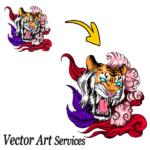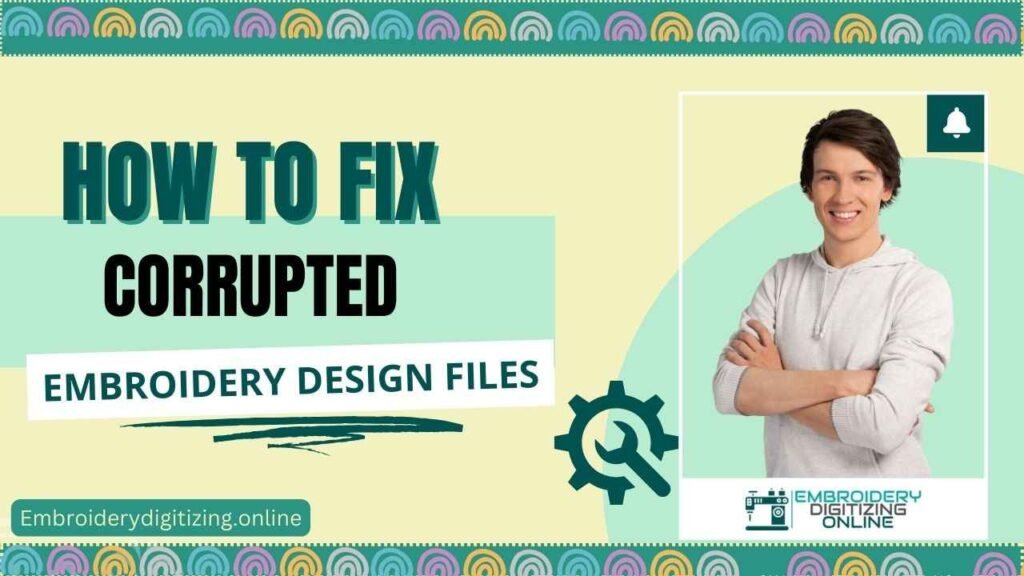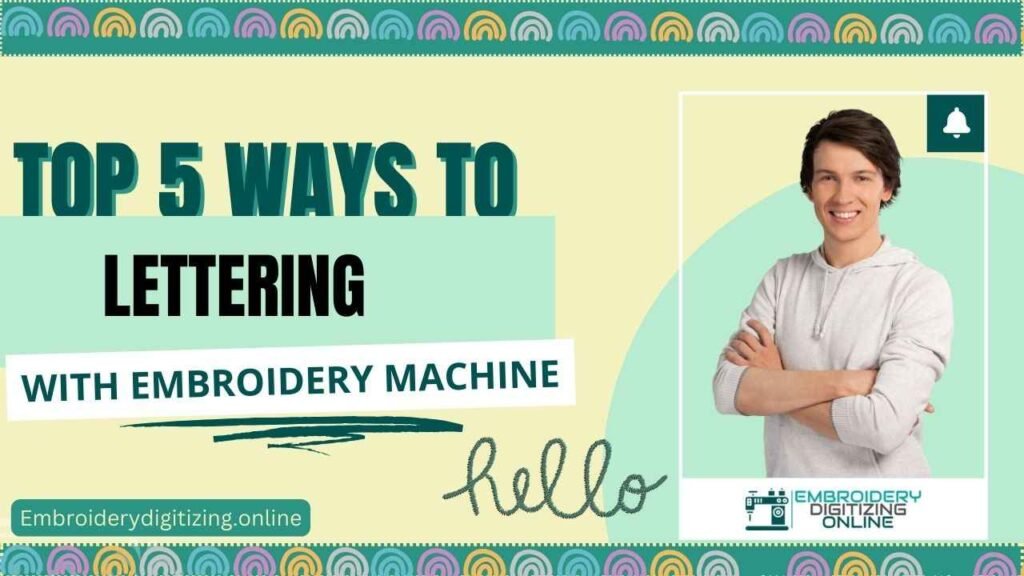How to Choose the Best Embroidery Font Designs
Embroidery font selection is not merely a matter of aesthetics but a crucial aspect that influences the overall quality and effectiveness of embroidered projects. The choice of embroidery letter patterns can make or break the design’s visual appeal, conveying messages with clarity and style.

Overview to Choose the Best Embroidery Font Designs
In this guide, we aim to provide readers with the necessary insights and considerations to help them navigate through the plethora of options and select the most suitable embroidery font for their projects. Embroidery fonts encompass a diverse range of lettering styles utilized in embroidery projects. From elegant script fonts to classic serif and modern sans-serif fonts, each type brings its own flair and personality to the design. By understanding the shade of different embroidery fonts, readers can better appreciate their versatility and potential to enhance the visual impact of their creations.
Table of Contents
Exploring Font Options for Embroidery Projects

Embarking on a journey to research and explore embroidery font options marks a crucial step in ensuring the ideal fit for your project. Among the plethora of resources available, online embroidery font libraries stand out as invaluable assets.
These digital repositories offer an extensive array of font choices, providing convenient access to various styles and designs. Many platforms offer previews of each font, coupled with detailed information on its attributes and suitability for diverse project types. By delving into these libraries, you can uncover fonts that seamlessly align with your aesthetic preferences and project specifications, streamlining the selection process.
Moreover, conducting a comprehensive review and comparison of different font styles and designs is imperative for making well-informed decisions. Dedicate time to meticulously analyze various fonts, taking into account factors such as style, legibility, and alignment with your project’s overarching theme. Curate a curated list of standout fonts and juxtapose them side by side for direct comparison. Pay keen attention to intricate details like letter shapes, spacing, and overall appearance to discern which fonts best complement your requirements.
This systematic approach enables you to streamline your options and zero in on fonts that possess the potential to elevate your embroidery project to new heights. Additionally, drawing inspiration from embroidery communities and forums can serve as a wellspring of invaluable insights and ideas. Engaging with fellow embroidery enthusiasts allows you to glean wisdom from their experiences and uncover fresh font styles and designs. Active participation in discussions, sharing of your own projects, and seeking constructive feedback from peers can significantly enrich your creative perspective.
These vibrant communities frequently showcase a diverse spectrum of embroidery work, offering boundless inspiration for your own endeavors. By immersing yourself in these communities, you can remain abreast of the latest trends and techniques in embroidery font selection, fostering continuous growth and innovation.
If you’re looking for a top-quality embroidery design digitizing & vector art service, look no further than ours! With quick turnaround times and excellent quality, we’re the perfect choice for anyone looking for a reliable and affordable option.
Get 50% OFF On Your First Order Always get a preview before you pay so that you know exactly what your design will look like. We guarantee you won’t be disappointed!
Assessing Font Performance

In the embroidery font assessment, testing and evaluation serve as indispensable processes for ensuring the effectiveness and excellence of selected fonts. Chiefly, conducting tests on embroidery fonts using sample materials is paramount to ascertain their compatibility with the chosen fabric and thread.
Given that different fabrics and threads can yield varied results when embroidered, factors such as stitch density and text clarity come into play. Through meticulous testing on sample materials, one can precisely evaluate how each font performs on the intended fabric, thereby ensuring that the final embroidery meets the desired standards of quality and appearance.
Moreover, testing facilitates a practical assessment of how different fonts manifest in embroidered designs. Although a font may appear visually appealing on screen or in print, its embroidered rendition may present unforeseen challenges. By stitching out samples of each font, individuals gain invaluable insights into their legibility, clarity, and overall visual impact when embroidered. This hands-on approach empowers decision-makers to make informed choices regarding font selection, ensuring that the chosen font seamlessly aligns with project requirements and aesthetic preferences.
Selecting the Best Font

Finalizing font choices based on research and evaluation involves thorough consideration of factors such as style, legibility, and suitability for the project. Each font’s characteristics should be evaluated against the project requirements to narrow down the choices.
Considering feedback from peers or clients is essential. Seeking input from others can provide valuable insights and help identify potential issues or preferences that may have been overlooked. Constructively consider feedback in the decision-making process.
Making the ultimate decision is based on personal preference and alignment with project requirements. Consider your own aesthetic preferences, as well as the intended audience and purpose of the project. Choose a font that not only meets functional needs but also resonates with the overall vision and goals of the project.
Major Factors to consider

Here are some major tips to effectively utilize the best embroidery font designs:
- Understand Project Context: Each embroidery project is unique, with specific requirements and objectives. Understanding the context in which the embroidery will be used is crucial for selecting the most appropriate font. For instance, a playful script font might be suitable for a children’s clothing brand, while a clean sans-serif font may be more fitting for corporate apparel. By aligning the font choice with the project’s context, you ensure that it effectively communicates the intended message to the target audience.
- Prioritize Legibility: In embroidery, legibility is paramount, particularly when the text serves a functional purpose such as labeling or branding. Fonts with intricate details or overly decorative elements may hinder legibility, especially when embroidered on textured fabrics. Choosing fonts that are clear, simple, and well-defined ensures that the message remains easily readable, even from a distance.
- Test Stitch Samples: Stitching out a sample of the chosen font before proceeding with the final embroidery is essential for evaluating its suitability. Factors such as thread tension, fabric type, and stitch density can affect the appearance of the embroidered text. By testing a sample, you can identify any issues or areas for improvement and make necessary adjustments to achieve the desired outcome.
- Consider Size and Scale: The size of the embroidery area dictates the appropriate font size for optimal visibility and impact. A font that is too small may lose detail and legibility, while a font that is too large can overpower the design. By considering the size and scale of the embroidery area, you can select a font size that fits proportionally and harmoniously within the overall design.
- Balance with Design Elements: Embroidery often involves multiple design elements such as graphics, images, or additional text. It’s essential to select a font that complements these elements and maintains visual harmony within the overall design. Fonts should enhance, rather than detract from, the aesthetic appeal of the embroidery project. By striking the right balance between fonts and other design elements, you can create a cohesive and visually appealing embroidery design.
Conclusion
In conclusion, selecting the right embroidery font involves careful steps like research, testing, and adaptation. Exploring online font libraries, comparing styles, and drawing inspiration from embroidery communities helps find the perfect fit for your project. Testing fonts on sample materials ensures they match well with your fabric and thread choices, ensuring quality results. Considering how fonts look when embroidered helps make informed decisions that suit your project needs. Additionally, with user-friendly services like embroiderydigitizing.online, businesses can confidently bring their creative visions to life, overcoming challenges along the way. By following these steps and utilizing available resources, both individuals and businesses can navigate through obstacles and keep their creative projects flourishing.
If you’re looking for a top-quality embroidery design digitizing & vector art service, look no further than ours! With quick turnaround times and excellent quality, we’re the perfect choice for anyone looking for a reliable and affordable option.
Get 50% OFF On Your First Order Always get a preview before you pay so that you know exactly what your design will look like. We guarantee you won’t be disappointed!
FAQ's
The best font for embroidery depends on factors like project theme, style, and audience. Popular choices include classic serif, elegant script, and clean sans-serif fonts.
A TrueType font for embroidery is a scalable font format designed for embroidery machines. It maintains quality when resized and is compatible with most embroidery software and machines.
Clean and simple fonts like sans-serif or modern serif fonts are often preferred for sewing logos. Bold characters can help the logo stand out and convey a professional image.
Consider factors such as project theme, legibility, and personal preference. Test fonts on sample materials to ensure compatibility with fabric and thread choices.
Yes, many embroidery software programs offer customization options, allowing you to adjust font size, spacing, and other attributes to fit your project’s needs.












